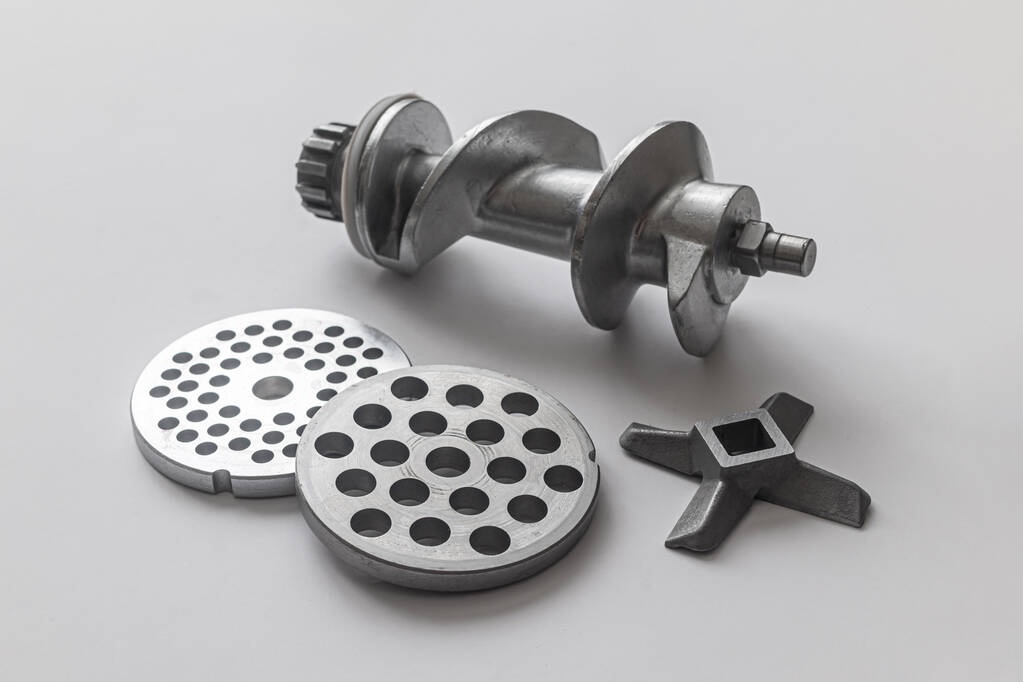Meat grinders are invaluable tools for meat lovers, hunters, and home cooks who enjoy creating their own ground meat and sausages. At the heart of these machines lie the meat grinder blades, the essential components responsible for cutting and grinding meat to the desired consistency. In this article, we will delve into the world of meat grinder blades, exploring their types, materials, and maintenance, to help you achieve efficient and high-quality meat processing results.
- Types of Meat Grinder Blades: a. Cutting Blades: The cutting blade, also known as the "cutter," is the primary component responsible for slicing and cutting the meat during the grinding process. It is typically a circular blade with sharp edges that rotate against the grinding plate to create the desired texture.
b. Grinding Plates: While not strictly blades, grinding plates play a vital role in the grinding cess. Thesproe circular metal plates feature different-sized holes or perforations that determine the fineness or coarseness of the ground meat.
- Blade Materials: a. Stainless Steel: Stainless steel blades are the most common choice for meat grinders due to their durability, resistance to corrosion, and ease of maintenance. They offer excellent cutting performance and are suitable for both home and commercial use.
b. Carbon Steel: Carbon steel blades are known for their exceptional sharpness and edge retention. However, they require regular maintenance to prevent rusting and are more prone to corrosion compared to stainless steel.
c. Alloy Steel: Some high-end meat grinders feature blades made from alloy steel, which combines the durability of stainless steel with the sharpness of carbon steel. These blades offer exceptional cutting performance and longevity.
- Maintenance and Blade Care: To ensure the longevity and optimal performance of your meat grinder blades, proper maintenance is crucial. Here are some essential maintenance tips:
a. Regular Cleaning: After each use, disassemble the grinder and clean all the components thoroughly, including the blades and grinding plates, to remove any meat residue or fat.
b. Blade Sharpening: Over time, blades may become dull, leading to inefficient grinding. How to sharpen meat grinder blades to restore their cutting efficiency.
c. Lubrication: Apply food-grade lubricating oil or spray to the blades and moving parts periodically to prevent friction and ensure smooth operation.
d. Storage: Store your meat grinder blades in a clean and dry place, away from moisture and contaminants, to prevent rust and maintain their sharpness.
Conclusion: Meat grinder blades are fundamental components that determine the efficiency and quality of meat grinding and processing. By understanding the different types of blades, their materials, and implementing proper maintenance practices, you can maximize the performance and lifespan of your meat grinder. Whether you're a home cook or a professional, investing in quality blades and taking care of them will result in consistently excellent ground meat and enjoyable culinary creations.


No comments yet